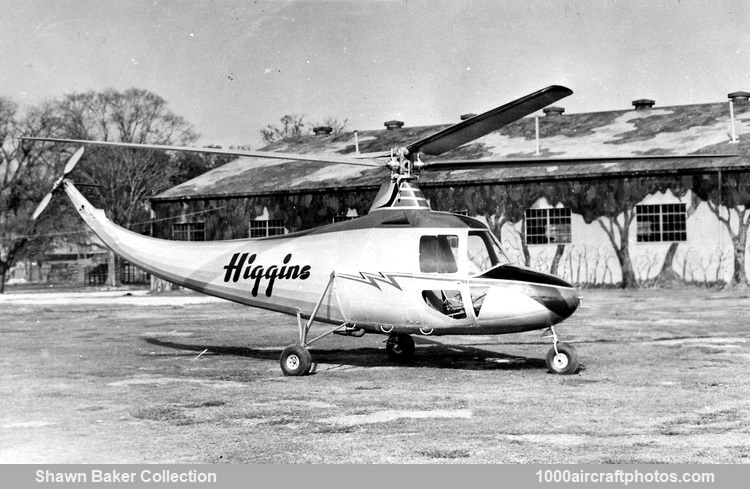12/31/2024. Remarks by Johan Visschedijk: "The engineering company Higgins Industries, Inc. at New Orleans, Louisiana, USA, formed by Andrew J. Higgins in 1930. In 1938 the company had 75 employees, five years later it had 25,000 employees spread over seven factories, producing small ships for the USN and USMC.
In 1942 Andrew Higgins formed the Higgins Aircraft, Inc. to undertake the construction of transport aircraft for the USAAF. Late 1942 Higgins received contract for 500 Curtiss CW-27 C-76 Caravan transport aircraft. In September 1943, the C-76 contract was cancelled and replaced by another contract for 500 Curtiss CW-20B C-46A Commando twin-engined all-metal transports. On August 17, 1944, the USAAF cancelled the C-46A contract but took delivery of two which were in an advanced stage of construction. After the completion of the second aircraft, the company undertook the manufacture of C-46 outer wings under sub-contract to Curtiss-Wright.
In 1943 Andrew Higgins formed the Higgins Industries, Inc. Helicopter Division. Design and construction of this helicopter had begun under the direction of the Italian-American aviation engineer and pioneer Enea Bossi at the Isaac Delgado Trade School (presently named Delgado Community College) in New Orleans. Designated EB-1, the project was taken over in 1943 by the Higgins organization, with Bossi as Consulting Helicopter Engineer, quite independent of the activities of Higgins Aircraft, Inc.
The EB-1 was a two-seat single-rotor helicopter with a small vertical torque rotor at the rear end of the fuselage. The power-plant consisted of an 180 hp Warner seven-cylinder pressure-cooled radial engine, mounted flat on the floor of the fuselage behind the cabin driving the four-blade rotor through a clutch transmission and free-wheeling unit. The four-blade rotor tilted as a unit and the direction of tilt determined the direction of flight. The pitch of the four blades was changed in unison, as opposed to the cyclical pitch-change in which the pitch was different for each blade depending on its position in the disc area.
For longitudinal or lateral control a normal control column was used, fore and aft or lateral movement rocking a swash plate in the rotor head which caused the blades to tilt as a unit, the fuselage remained on an even keel regardless of the pitch of the blades or the positions of their axes with respect to the axis of the fuselage. Pitch control for ascent or descent was by a separate lever operating a shaft within the main drive shaft which, in sliding up or down, changed the rotor pitch uniformly through a series of levers within the head acting on the rotor spars. Blade pitch could be varied from 5 to 15 degrees. At a predetermined pitch control position hovering was achieved. In the event of engine failure a free-wheeling unit permitted auto-rotation.
Directional control, by the usual foot pedals, was through the power-driven vertical tail rotor which consisted of a two-blade variable-pitch propeller normally set, with pedals in the neutral position, to act as a torque compensator. Movement of the pedals variated the pitch. There was a small fixed stabilizing surface opposite the hub of the torque or directional control rotor.
Structurally, the Higgins EB-1 had a metal-framed fuselage with a metal-covered cabin and engine compartment. The rear half was covered with fabric over a light fairing structure. The tricycle landing-gear had oleo-sprung main wheels and a steerable nose wheel. The enclosed cabin seated two side-by-side with the controls opposite the left seat. It had a door one on each side of the cabin. First flown in 1943, the EB-1 the sole helicopter built by the Higgins organization, its fate is unknown."
